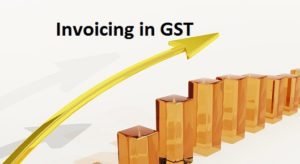 GST INVOICE: The government has notified rules of invoicing under GST along with a template of invoice covering the elements such as suppliers’ details, GST rates that need to be presented.
GST INVOICE: The government has notified rules of invoicing under GST along with a template of invoice covering the elements such as suppliers’ details, GST rates that need to be presented.
The Central Government has issued GST Invoice Rules, based on that suppliers can issue two kinds of invoices under GST namely tax invoice and bill of supply. Central Government has issued GST Invoice format for supply of goods and GST Invoice format for supply of services along with details such as number of copies, their specific uses, etc.
- Tax invoice:
- When a registered taxable person supplies taxable goods or services, he issues a tax invoice.
- A tax invoice should contain necessary details, following is a format of tax invoice according to rules:
- http://www.cbec.gov.in/resources//htdocs-cbec/gst/draft-formats-under-invoice-rules.pdf;jsessionid=98D31C5AB7F13582EA237998A6A3776F
- Bill of Supply:
- Supplier generally issues tax invoice to charge the tax and pass on the credit.
- In GST there are some instances where law does not allow the supplier to charge any tax and hence he can’t issue a tax invoice instead he issues another document called Bill of Supply.
- Cases where a registered supplier needs to issue bill of supply:
- Supply of exempted goods or services
- Supplier is paying tax under composition scheme
When supplier supply goods, the supplier must issue three copies of the invoice:
- Original: When a buyer makes the purchase he gets the first copy of invoice, considerable as ‘Original for Recipient’.
- Duplicate: Supplier issues duplicate copy to the transporter to present as evidence as and when necessary, and is considerable as ‘Duplicate for Transporter’. The carrier of goods does not need to carry the invoice if the supplier has obtained an invoice reference number.
- The supplier can obtain an Invoice Reference Number from the common portal GSTN by uploading a tax invoice issued by him. It is valid for 30 days from the date of uploading.
- Triplicate: The supplier for his own record, retains this copy.
Some significant facts about GST Invoice:
- Based on the same invoice the seller and buyer make entry in their books of accounts.
- Based on the tax invoices only purchaser can claim input credit.
- The Central Government has issued GST Model Law. It defines the time limit for issue of GST tax invoices, revised bills, debit notes and credit notes.
- A registered dealer, in normal case, issues the GST invoice on or before the time when the recipient of goods receives delivery.
- In case of supply of services, service provider issues the invoice within 30 days and in case of Banks and NBFCs 45 days of supply of services.
- Taxable person can issue supplementary tax invoice in case where anyone finds any deficiency in a tax invoice. One of the examples of supplementary tax invoice is Debit Note.
- Registered dealers can claim tax credit by using tax invoice.
- Unregistered dealers or retail customers can issue commercial invoice but they can not claim any tax credit on this invoice.
Some important points of Tax Invoice under GST:
- The serial number should be a consecutive number, containing only alphabets and/or numerals and must be unique for a financial year.
- If the recipient is unregistered and taxable value of supply is Rs. 50,000 or more, the state name and code must be there.
- Taxable value is the value after deducting discount or abatement, if any.
- Notified persons should mention HSN Code in case of goods or Accounting Code in case of services for supplies.

Pingback: Action Plan For Goods & Service Tax: Get Ready | TaxPage.in